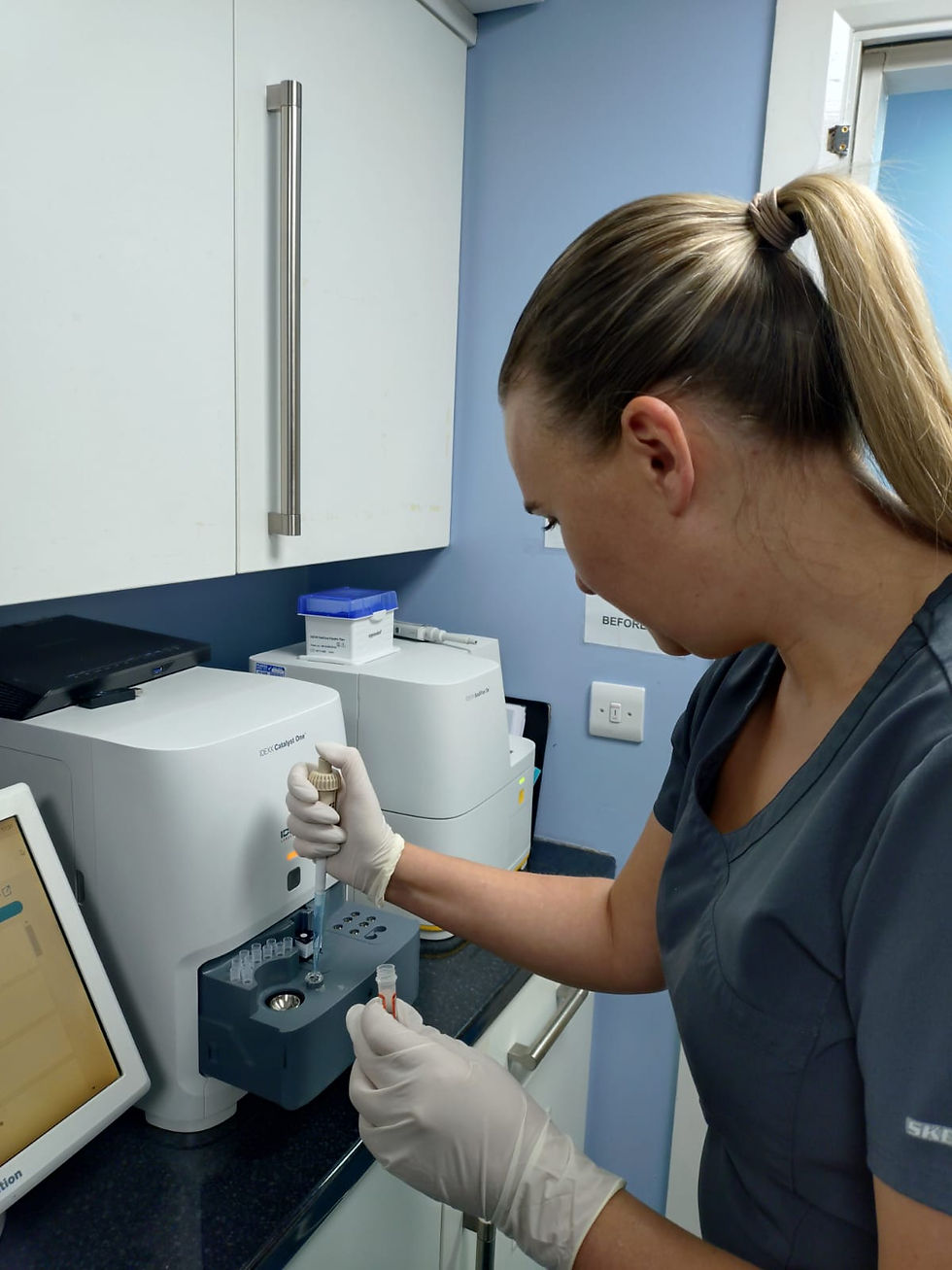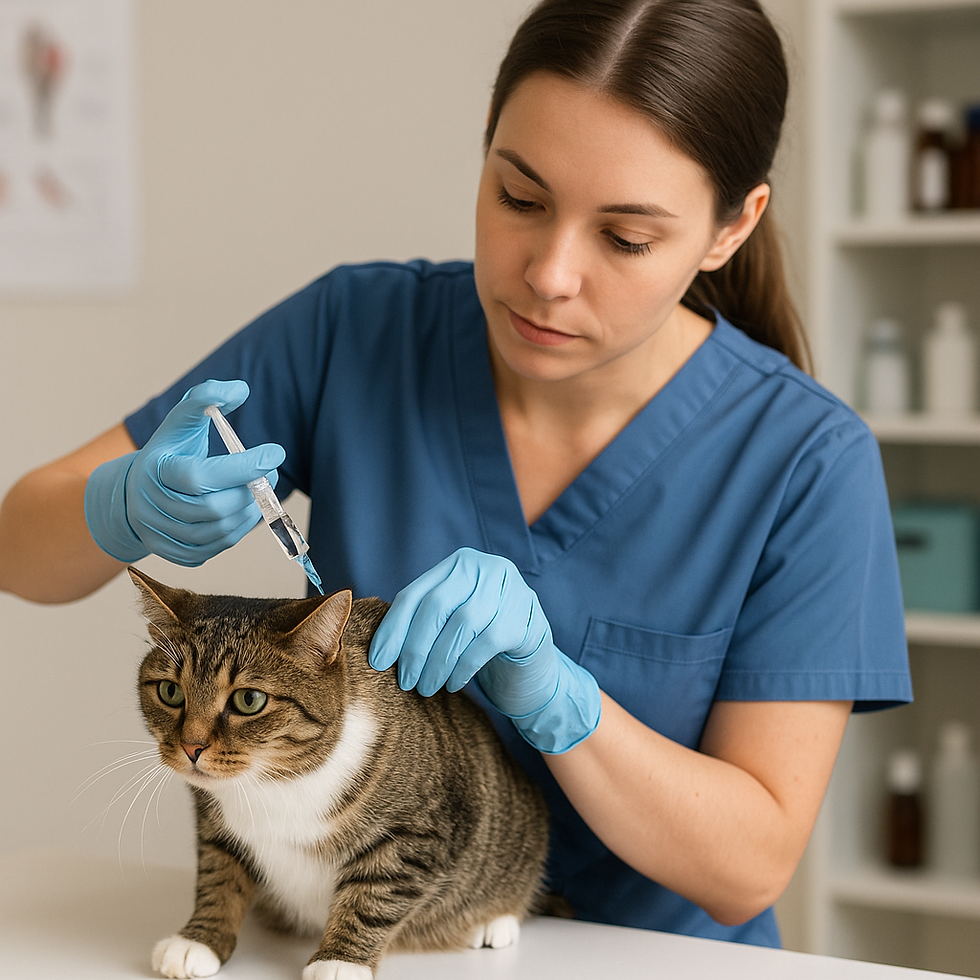How to Stop Heavy Bleeding in a Cat: A Step-by-Step Emergency Guide
- Paul Proctor
- May 7
- 2 min read
When your cat is bleeding heavily, every second counts. Whether caused by an accident, a fight with another animal, or a serious wound, uncontrolled bleeding can be life-threatening. As a pet parent, knowing how to react quickly and effectively can make all the difference.
As per our previous post, having a first aid kit handy at home is ideal in such situations. This post will walk you through the essential steps to stop heavy bleeding in a cat and when to seek emergency veterinary care.

🐾 Step 1: Stay Calm and Safe
Your cat will be scared and possibly in pain, which can cause them to act out. Approach them calmly and gently. If necessary, wrap your cat in a towel to protect yourself from claws and bites—safety is important for both of you.
🩸 Step 2: Identify the Source of the Bleeding
Quickly locate where the blood is coming from. Common areas include paws, ears, tail, or an open wound on the body. Heavy bleeding means blood is flowing rapidly or pooling—it’s not just a few drops.
🧼 Step 3: Apply Direct Pressure
Use a clean cloth, sterile gauze, or even a T-shirt if nothing else is available. Gently press the material directly on the wound and hold it there. Do not remove the material to check the wound; this can disrupt clotting. If blood soaks through, place another cloth on top and continue applying pressure.
🚿 Step 4: Elevate the Wound (if possible)
If the injury is on a leg or paw, gently raise the limb above the level of the heart while maintaining pressure. This can help slow the bleeding.
🚫 Step 5: Only Use a Tourniquet if Instructed by a Vet
If you are finding the pressure and elevation alone is not stemming the bleed, and only if the veterinary surgeon advises you to do so, a tourniquet can be applied. Extreme caution must be taken when using a tourniquet, so it is extremely important that this only be carried out at the request/advice of a registered veterinary surgeon. Improper use of tourniquets can result in permanent damage to limbs due to the restriction of blood flow.
🧊 Step 6: Keep Your Cat Warm and Calm
Shock can set in quickly. Keep your cat warm by wrapping them in a blanket or towel, and speak to them softly to reduce stress.
🚑 Step 7: Get to the Vet—Immediately
Heavy bleeding is a medical emergency. Once the bleeding is controlled (or even while someone else is applying pressure), contact your vet or emergency animal clinic and head there as soon as possible. Call ahead so they can prepare for your arrival.
Final Thoughts
No one wants to face an emergency with their cat—but being prepared can save their life. Learning basic pet first aid, recognising signs of serious injury, and staying calm under pressure are key steps to being a responsible and loving cat guardian.
If your cat experiences any type of bleeding that doesn’t stop after a few minutes of direct pressure, or if they appear weak or unresponsive, don’t delay—seek professional veterinary help immediately.







Comments